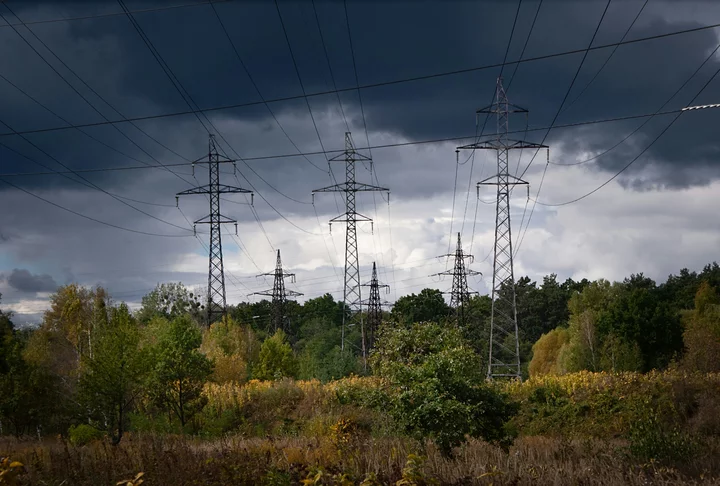Report on Electrical Grid Integrity and its Alignment with Sustainable Development Goals
1.0 The Critical Nature of Energy Infrastructure
The provision of electricity is fundamental to the functioning of modern society. Power is delivered through a complex infrastructure network of substations, transformers, and transmission lines, often spanning hundreds of miles. The reliability of this network is essential for ensuring consistent energy availability for residential, commercial, and industrial use.
2.0 Correlation with Sustainable Development Goals (SDGs)
A secure and reliable electrical grid is a prerequisite for achieving multiple United Nations Sustainable Development Goals (SDGs). The stability of the power supply directly impacts national progress on key development targets.
- SDG 7 (Affordable and Clean Energy): A robust and secure grid is the primary mechanism for ensuring universal access to affordable, reliable, and modern energy services.
- SDG 2 (Zero Hunger): The objective of food security is directly dependent on reliable electricity for critical agricultural operations. These include:
- Power for irrigation systems
- Refrigeration for food preservation
- Energy for food processing and supply chain logistics
- SDG 8 (Decent Work and Economic Growth): Sustained economic growth and productivity are contingent upon a steady supply of electricity. Sectors such as manufacturing, logistics, and commerce depend entirely on consistent power.
- SDG 9 (Industry, Innovation, and Infrastructure): The electrical grid constitutes a foundational element of national infrastructure. Modernizing this grid to enhance its resilience and security is a core objective for building sustainable industrialization and fostering innovation.
3.0 National Security and Infrastructure Challenges
The integrity of the national electrical grid is a matter of national security. Concerns have been formally recognized regarding the obsolete state of the grid, which poses a significant risk to national stability. A national energy emergency was previously declared to address these vulnerabilities and initiate measures to strengthen the grid’s reliability and security. Modernizing this critical infrastructure is imperative to safeguard national, economic, and food security in alignment with global sustainable development objectives.
Analysis of SDGs in the Article
1. Which SDGs are addressed or connected to the issues highlighted in the article?
- SDG 7: Affordable and Clean Energy: The article’s central theme is the electrical grid, which is the primary infrastructure for delivering energy. It emphasizes the importance of reliable electricity, directly connecting to the goal of ensuring access to modern energy for all.
- SDG 9: Industry, Innovation and Infrastructure: The text describes the electrical grid as a “complex network of substations, transformers, and transmission lines” and quotes a warning that the “grid system in this country that’s obsolete and a disaster.” This highlights the need for resilient and upgraded infrastructure, which is the core of SDG 9.
- SDG 2: Zero Hunger: The article explicitly links reliable energy to “food security.” It states that “Farms depend on reliable power for irrigation, refrigeration, and processing,” connecting the functionality of the energy grid to the stability of the food supply chain.
- SDG 8: Decent Work and Economic Growth: The article connects the electrical grid to “economic security.” It points out that “Manufacturing, logistics, and commerce depend on steady electricity. The economy depends on it,” indicating that a stable energy supply is a prerequisite for economic activity and growth.
2. What specific targets under those SDGs can be identified based on the article’s content?
- Target 7.1: By 2030, ensure universal access to affordable, reliable and modern energy services. The article’s focus is not on initial access but on the quality of that access. The call to “strengthen its reliability and security” directly addresses the need for reliable energy services as specified in this target.
- Target 9.1: Develop quality, reliable, sustainable and resilient infrastructure… to support economic development and human well-being. The article’s description of the grid as “obsolete and a disaster” and the declared “national energy emergency to ensure the integrity of America’s electrical grid” align perfectly with the goal of developing reliable and resilient infrastructure.
- Target 2.4: By 2030, ensure sustainable food production systems and implement resilient agricultural practices. While the target is broad, the article implies that the resilience of agricultural practices like “irrigation, refrigeration, and processing” is entirely dependent on the resilience of the energy infrastructure that powers them.
- Target 8.1: Sustain per capita economic growth in accordance with national circumstances. The article posits that the entire economy depends on steady electricity. Therefore, maintaining and improving the grid is presented as a foundational requirement for sustaining the economic activities of “manufacturing, logistics, and commerce” and achieving overall economic growth.
3. Are there any indicators mentioned or implied in the article that can be used to measure progress towards the identified targets?
The article does not mention specific, quantitative indicators. However, it implies several qualitative and conceptual indicators for measuring progress:
- Integrity, Reliability, and Security of the Electrical Grid: The article’s primary concern is the state of the grid. The declared national emergency aims to “ensure the integrity of America’s electrical grid and strengthen its reliability and security.” Progress would be measured by improvements in these three areas, which could translate to metrics like reduced power outages or enhanced protection against disruptions.
-
Continuity of Power for Critical Sectors: The article implies that a key measure of success is the uninterrupted supply of power to essential sectors. Progress could be measured by the operational continuity of:
- Food Production: Ensuring farms have consistent power for “irrigation, refrigeration, and processing.”
- Economic Activity: Ensuring “manufacturing, logistics, and commerce” have the “steady electricity” they depend on.
4. Summary Table of SDGs, Targets, and Indicators
| SDGs | Targets | Indicators (Implied from the article) |
|---|---|---|
| SDG 7: Affordable and Clean Energy | 7.1: Ensure universal access to affordable, reliable and modern energy services. | The reliability and security of the electrical grid. |
| SDG 9: Industry, Innovation and Infrastructure | 9.1: Develop quality, reliable, sustainable and resilient infrastructure. | The integrity of the grid infrastructure (moving from “obsolete” to modern and resilient). |
| SDG 2: Zero Hunger | 2.4: Ensure sustainable food production systems and implement resilient agricultural practices. | Uninterrupted power for agricultural processes like irrigation and refrigeration, ensuring food security. |
| SDG 8: Decent Work and Economic Growth | 8.1: Sustain per capita economic growth. | Availability of steady electricity to support manufacturing, logistics, and commerce, ensuring economic security. |
Source: wvnews.com







